Choose and Manage Hearing “Earpro” for Safety, Enjoyment
Eve Flanigan 03.09.21
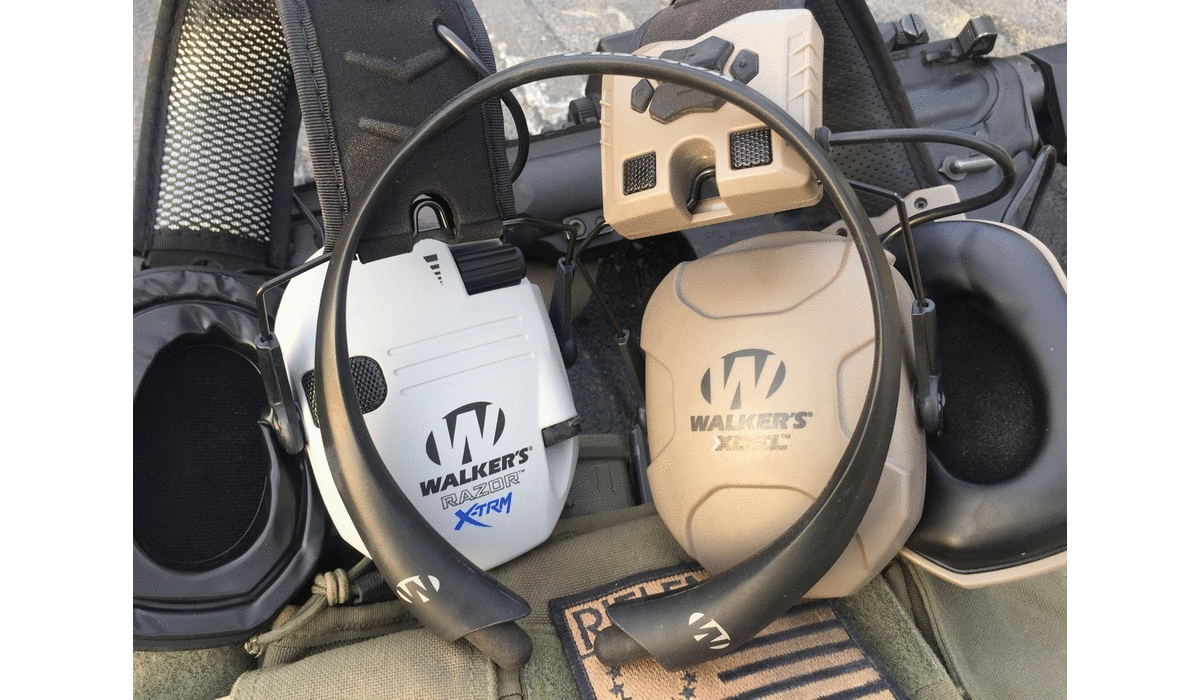
Hearing is a precious resource, but it can easily be damaged forever. Outdoorspeople – particularly shooters, but also those who operate off-road vehicles, chainsaws, mowers, power tools, and even hand tools in some cases – are at risk for hearing loss.
Nobody wants to be that person who says “what?” all the time due to poor hearing or tinnitus. This article is a comparison of the two main types of hearing protection, foam plugs and muffs, and discusses a couple of hearing protection, or “earpro” products I’ve found useful as I attempt to minimize hearing loss.
Foam Plugs
“Foamies” have the advantages of being extremely light and portable. They allow a cheek weld without working around muffs, and eliminate the pain that can result from wearing muffs and glasses. At around $2 for a plain pair, they’re also inexpensive, and are often purchased in bulk. In terms of blocking out noise, many people are surprised to learn that they’re rated higher than most muffs, at around 32 dB.
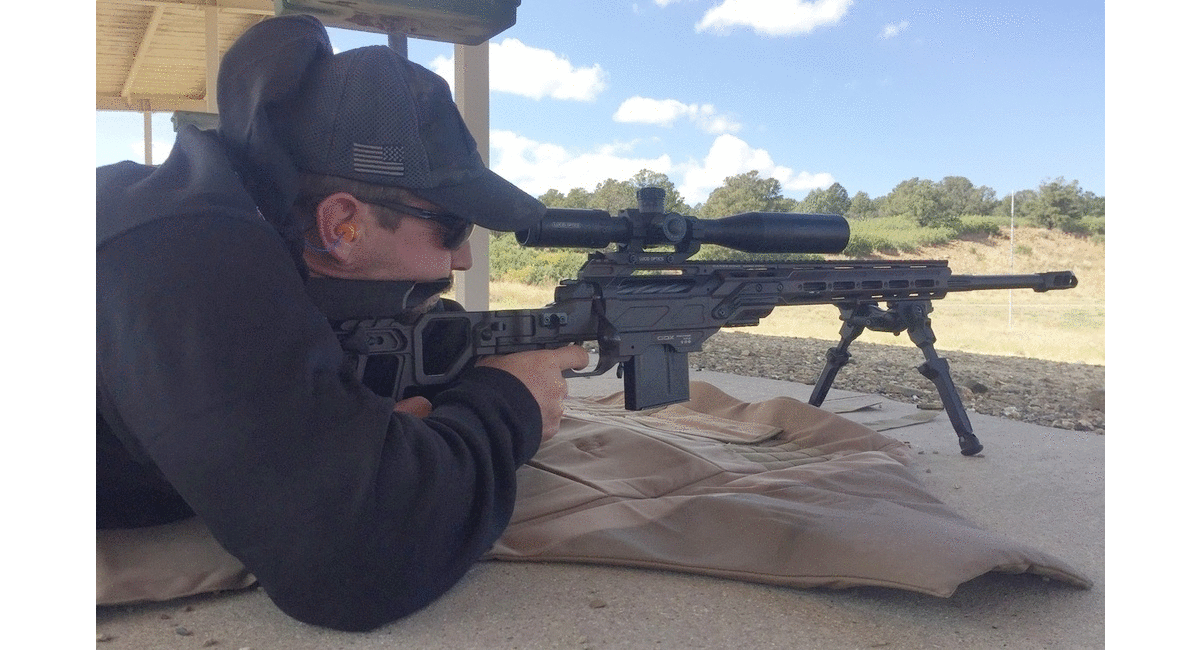
Downsides of using foam plugs include that they’re not made for sharing, ease of losing track of them, and durability. I have seen many range-goers who’ve not learned how to insert foam earplugs be annoyed or surprised when a plug falls out. It may seem pedestrian if you’re already aware, but it bears repeating that there’s a procedure for proper insertion.
Roll the plug between the thumb and forefinger until it squishes to less than half its original circumference. Then, with the plug between thumb and forefinger on the same side as the ear it’s going into, reach over the top of the head with the free hand and pull gently up on the ear, opening the canal a bit wider.
Insert the compressed plug into the ear while the other hand holds the ear. Then release both hands. In a few seconds, the foam will expand to seal the ear canal. In the process, it’ll anchor itself into place.
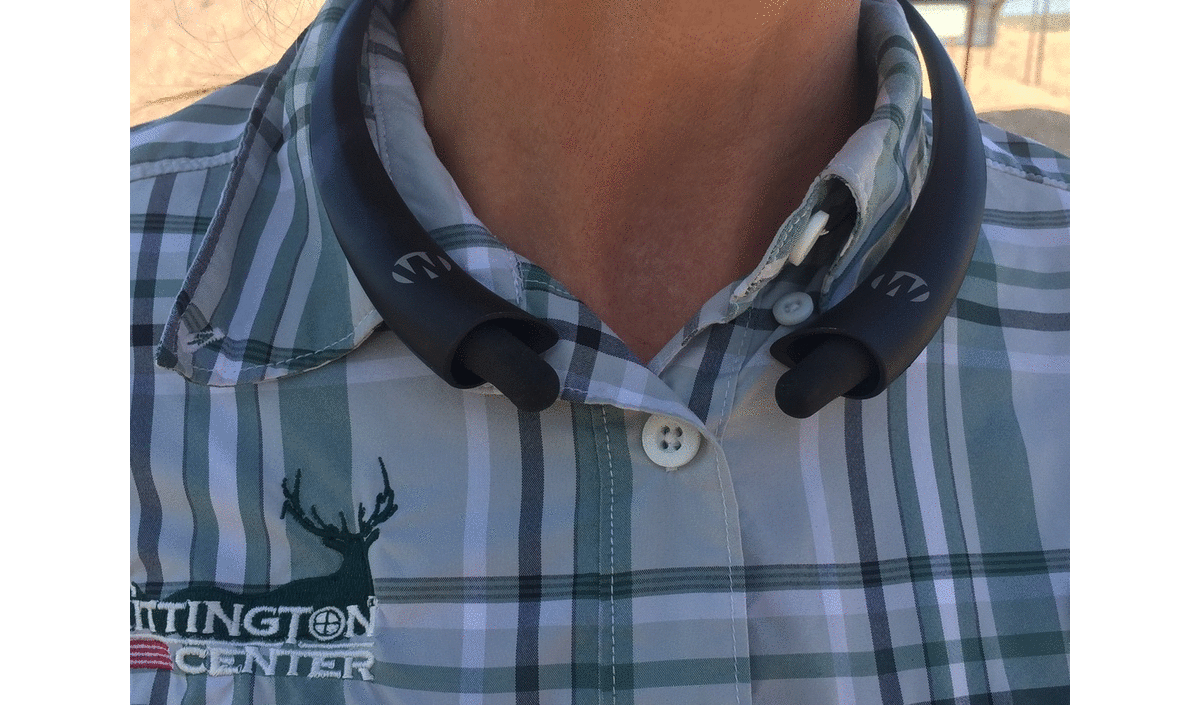
Keeping track of foam plugs can be a hassle. Walker’s Passive Neckband with retractable plugs is the solution. For $25, this comfy band rests around the neck and keeps foam plugs at the ready. I have found this comfortable to use, even with a heavy jacket on.
Earmuffs
Muffs are made to fit around the entire ear and seal out noise around both the ear and the sensitive bony structures around it. A primary advantage of muffs is protection of the nerves behind the ear; however, that protection of the entire ear area comes at the price of less blocking-out of sound compared to plugs. Most commercial earmuffs block a bit less sound, decibel-wise, than plugs of any sort; however, the reduced shock to the ears overall, especially over time, can offset that difference.
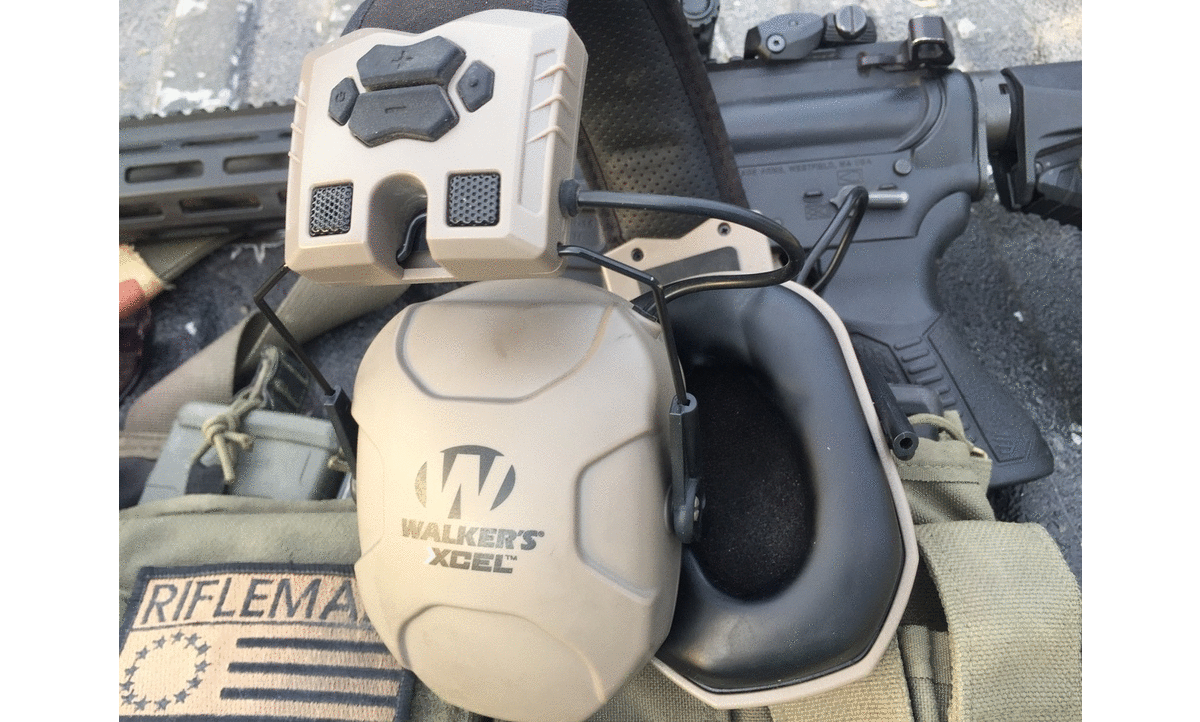
Ear muffs are generally held in place by an adjustable band that goes over the head. Sport shotgunners often use muffs with band that encircles the back of the neck instead. A great advantage of modern muffs is that electronic versions are available. These can enhance the volume of voices or steel targets in the distance even amplifying safe-volume sounds louder than they’d sound to the naked ear.
Downsides of earmuffs include potential interference with a good cheek weld when shooting a long gun. This is usually overcome with practice, and modern muffs usually have a flatter profile that makes them more stock-friendly.
Also, in combination with safety, sun, or prescription eyewear, extended wear of muffs can be fatiguing and painful as the arms of eyeglasses are pressed into the head during wear. Muffs are substantially more expensive than plugs. Simple, non-electronic, but good quality muffs can be found for under $20. Add electronic capabilities, and the price jumps to near $100 or more.
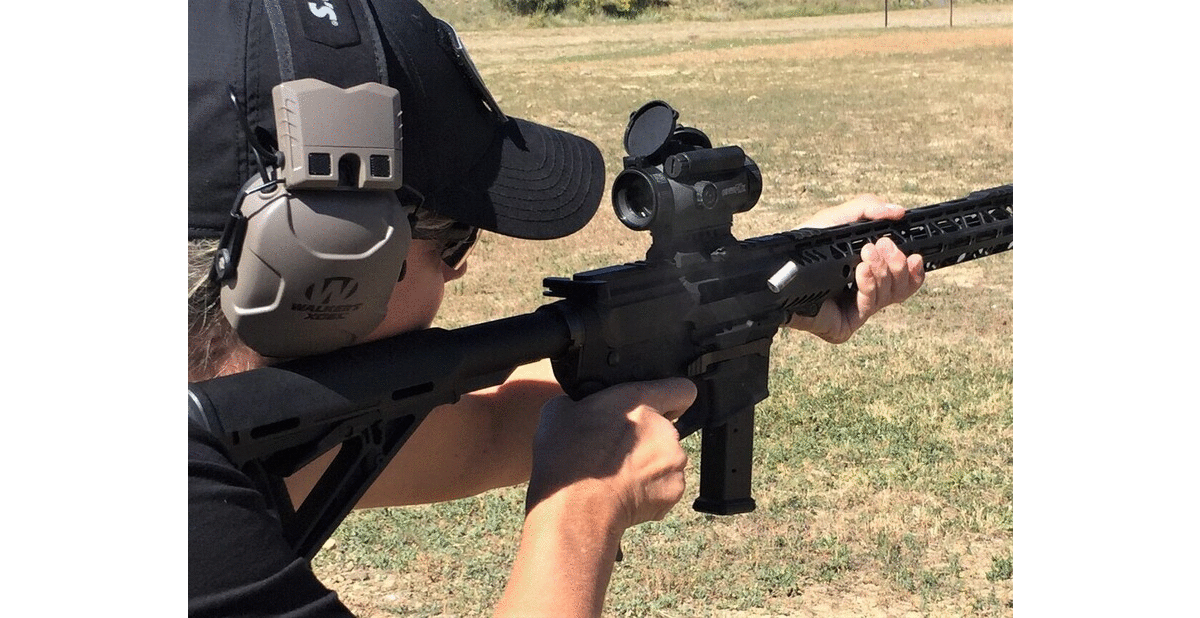
Some muffs are equipped with bluetooth technology allowing the wearer to enjoy music or a podcast while shooting, mowing, or whatever. Some, usually found from police or military suppliers such as Earmor, or as a motorcycling specialty item, include an adjustable microphone and internal speakers for two-way communication.
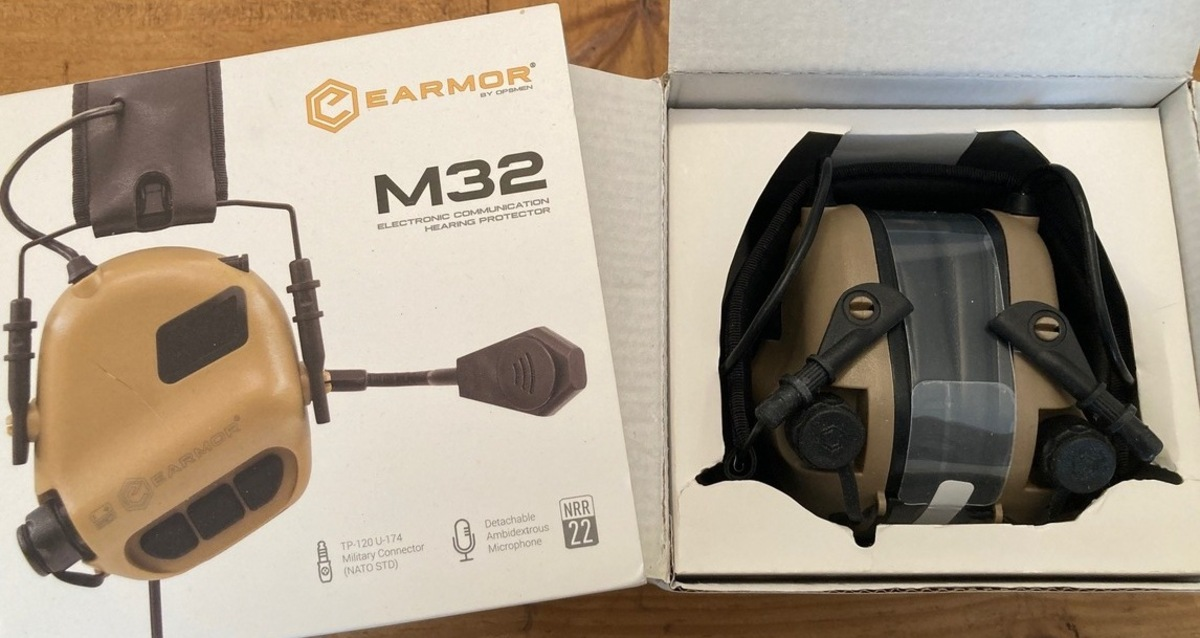
“Stacking” Earpro
There are occasions when it’s recommended to use both foam plugs and earmuffs. This can include extremely loud environments in which a single layer of protection doesn’t block out sound enough and the noise is still painful. Big calibers in indoor ranges can create that problem. So can being near, especially on the firing line next to someone operating a long gun fitted with a muzzle brake or compensator.
These devices direct much of the concussion and noise from shooting out to the sides while also dampening recoil. Thanks to the laws of physics, it’s usually the bystander or fellow shooter, not the operator him- or herself, who experiences the brunt of the noise when these muzzle devices are in use.
Another situation in which some people choose double protection is when a shooter has developed the habit of anticipating recoil, manifested as a flinch when pressing the trigger.
Some instructors recommend the sound-deadening effect of two kinds of earpro to minimize the version of fright that the sudden, loud concussion of shooting delivers, but this has the downside of making conversation more difficult with a person who’s just learning the ropes of gun handling and gun safety.
Hearing conversation with doubled-up earpro can be challenging at best, but there are times when it’s well worth it to deaden sound to the greatest extent possible.
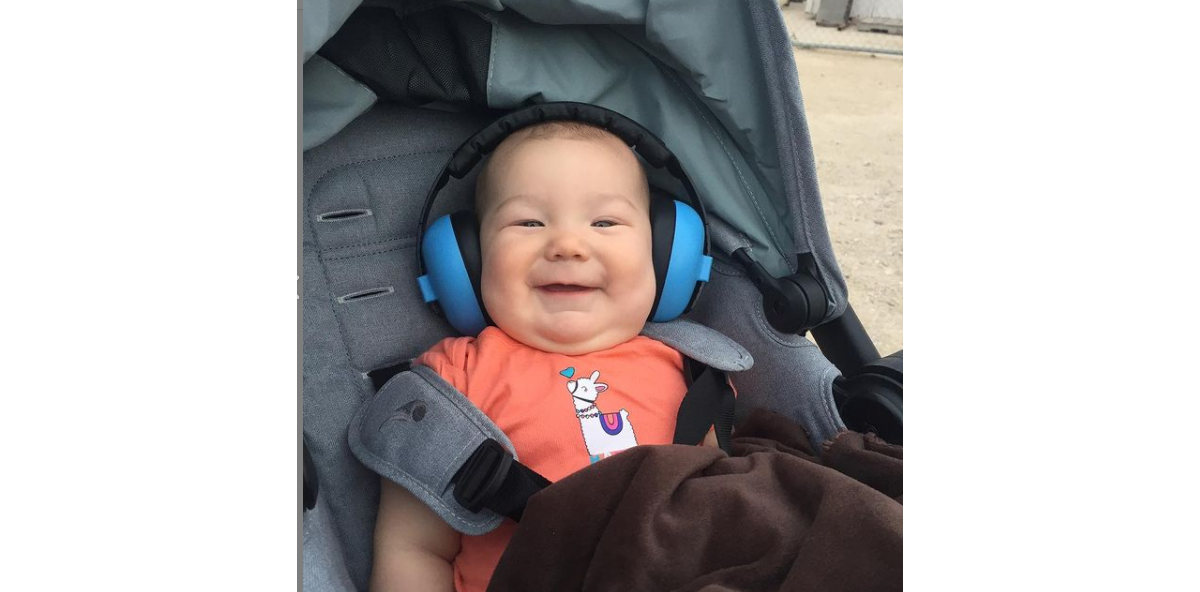
Managing Ear Muffs
Part of using hearing protection effectively is making sure it’s there when needed. Lately I’ve been using the belt-mounted “EarClip” from Ready Up Gear for both teaching and practice sessions. My range days are very active with lots of walking, transporting targets by hand, and shooting from different positions. The clip allows me to stow my Walker’s Xcel 100 Digital Electronic “ears” on my hip where they’re out of the way and not hurting my head. The little $9.99 EarClip is a lifesaver! Stowing my “ears” where they’re accessible yet not squeezing my temples reduces fatigue on long range days.
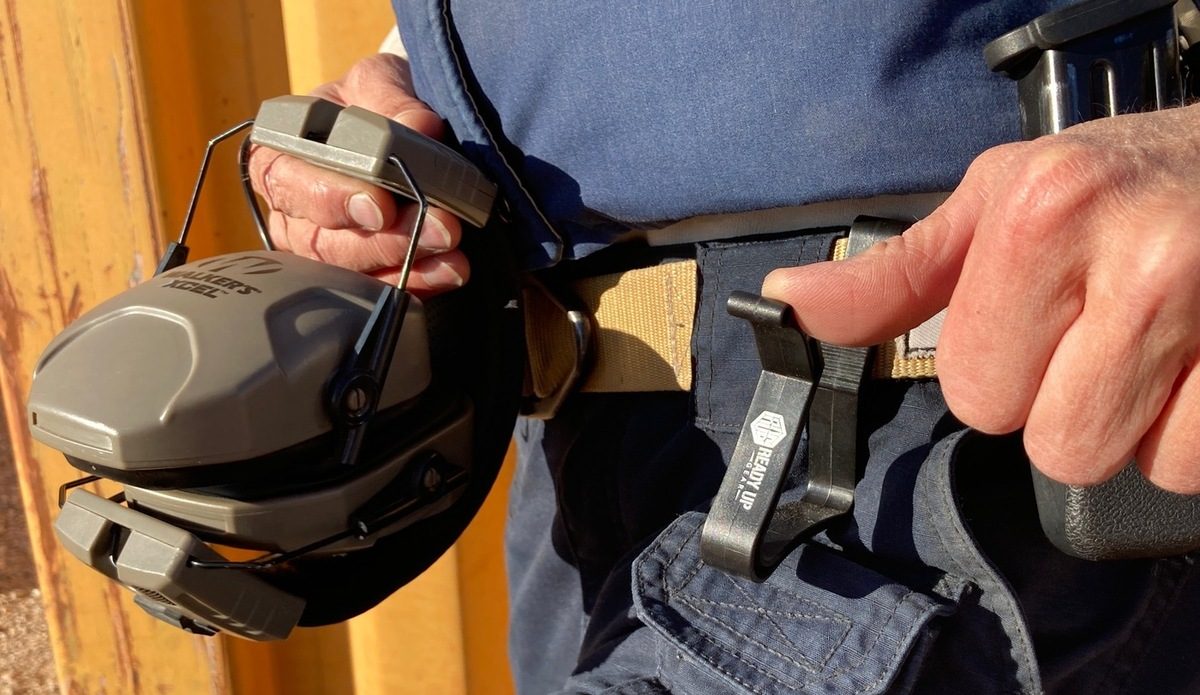
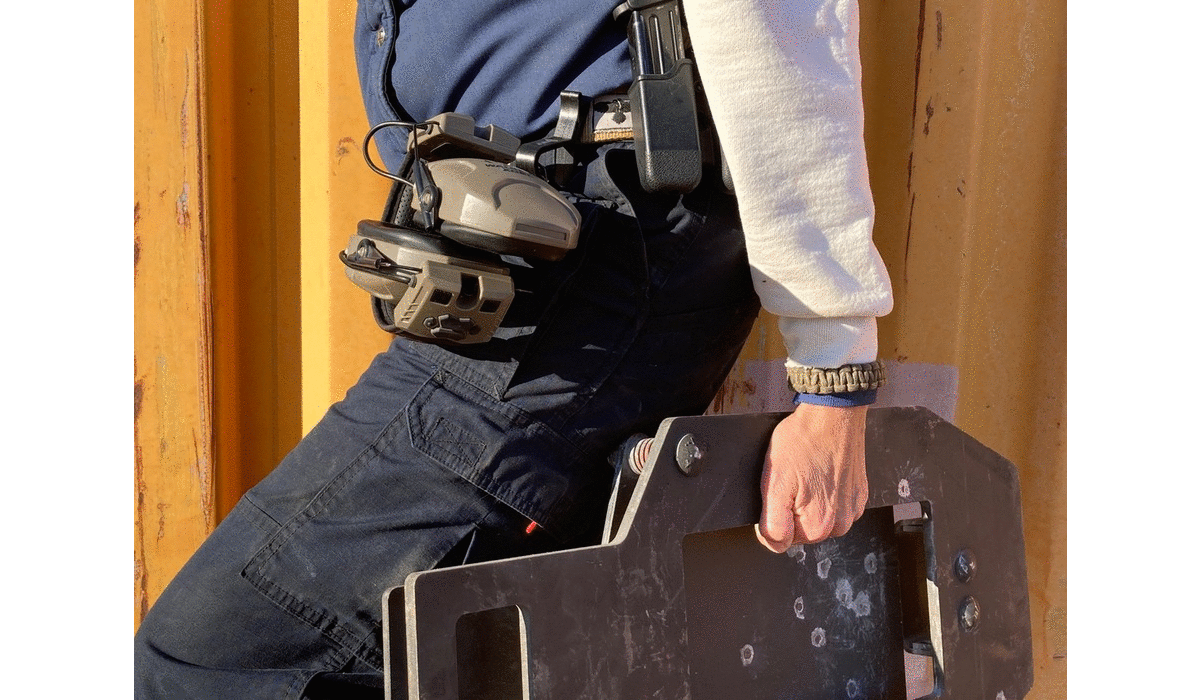
There are other types of ear protection devices out there and new technologies are added every year, but these two are the most common of all varieties. Choose one you like, and wear them consistently around noise to protect your sense of hearing.